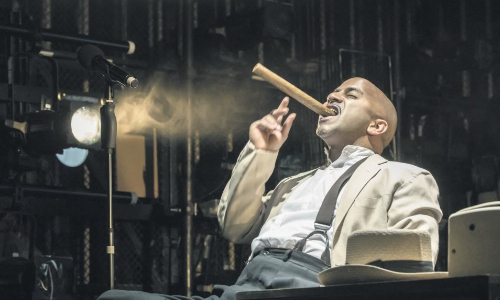Review: The Kid Stays in the Picture

The Kid Stays in the Picture started life as the self-aggrandising memoir of legendary Hollywood producer Robert Evans, a man who had it all, lost it all, rediscovered it, lost it again, woke up in bed with it, and eventually made a small fortune writing about it.
“It” is variously Hollywood, the American dream, love, sex, drugs and power. His story is a wild ride through post-war Tinsel Town, charting the unlikely progress of this womanising bully to the pinnacle of the movie business. His roller-coaster story includes green-lighting The Godfather, Chinatown and Marathon Man, and pleading guilty to buying a job-lot of cocaine from an undercover DEA officer.
His memoirs were adapted into a documentary in 2002, narrated by the man himself, which boiled the sprawling collection of anecdotes into a tight 93 minutes. In both guises, the brilliance of the material is its ability to tell three stories at once: personal tales about Henry Kissinger and Frank Sinatra and Marlon Brando; the wider story of the movie business; and the macro story of post-war America, taking in the defining events of the last 80 years including Pearl Harbour, the mob, Vietnam, the Manson killings and the Kennedy Assassination.
This begs the question: how on earth do you adapt for the stage what is essentially a series of vaguely connected thoughts? Enter Simon McBurney, artistic director of Complicite, who is no stranger to staging the unstageable. His 2012 adaptation of Mikhail Bulgakov’s hallucinatory satire The Master and Margarita, which was more concerned with how the novel felt than what it said, remains one of the most astonishing productions I’ve ever seen.
He employs some similar techniques here, with his all-star cast (including Children of Men actor Danny Huston’s UK theatre debut) segueing fluidly from role to role, anecdote to anecdote, gender to gender, the material layered to the point where details are lost amid a gaudy swirl of sound and light.
It’s technically complex, with projections overlaying the stage, which is itself divided into two sections. Some of the projections are filmed live, which is a neat conceit that works both visually and narratively. When it works, that is: a bunch of early previews were cancelled when it became clear things weren’t going to be ready on time, and on the rearranged press night the camera stopped recording half-way through, instead beaming its settings menu behind the actors. They ploughed on, but a certain amount of damage was done.
The Kid Stays in the Picture is a thrilling production, played out at breakneck speed, that captures the chaos and energy of Hollywood, even if it’s inevitably short on detail. It’s not without a certain irony that, much like its protagonist, The Kid Stays in the Picture suffers not from a lack of ambition but from ambitions that threaten to out-strip its capability.
First published in City A.M.

